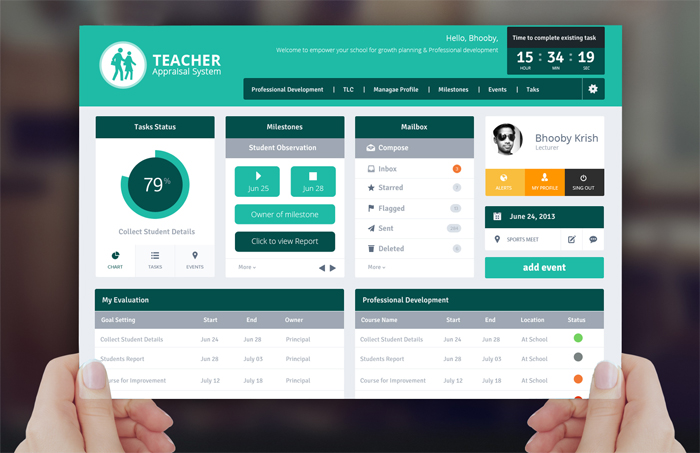-
There are three factors that should be considered for the design of a successful user interface; development factors, visability factors and acceptance factors.
-
Development factors help by improving visual communication. These include: platform constraints, tool kits and component libraries, support for rapid prototyping, and customizability.
-
Visability factors take into account human factors and express a strong visual identity. These include: human abilities, product identity, clear conceptual model, and multiple representations.
-
Included as acceptance factors are an installed base, corporate politics, international markets, and documentation and training.

A fundamental reality of application development is that the user interface is the system to the users. What users want is for developers to build applications that meet their needs and that are easy to use. Too many developers think that they are artistic geniuses – they do not bother to follow user interface design standards or invest the effort to make their applications usable, instead they mistakenly believe that the important thing is to make the code clever or to use a really interesting color scheme.
Principles of User Interface Design
There are three fundamental principles involved in the use of the visible language.
-
Organize: provide the user with a clear and consistent conceptual structure
-
Economize: do the most with the least amount of cues
-
Communicate: match the presentation to the capabilities of the user.
Strong visual hierarchies work best
A strong visual hierarchy is achieved when there is a clear viewing order to the visual elements on a screen. That is, when users view the same items in the same order every time. Weak visual hierarchies give little clue about where to rest one’s gaze and end up feeling cluttered and confusing. In environments of great change it is hard to maintain a strong visual hierarchy because visual weight is relative: when everything is bold, nothing is bold. Should a single visually heavy element be added to a screen, the designer may need to reset the visual weight of all elements to once again achieve a strong hierarchy. Most people don’t notice visual hierarchy but it is one of the easiest ways to strengthen (or weaken) a design.
Interfaces exist to enable interaction
Interfaces exist to enable interaction between humans and our world. They can help clarify, illuminate, enable, show relationships, bring us together, pull us apart, manage our expectations, and give us access to services. The act of designing interfaces is not Art. Interfaces are not monuments unto themselves. Interfaces do a job and their effectiveness can be measured. They are not just utilitarian, however. The best interfaces can inspire, evoke, mystify, and intensify our relationship with the world.

